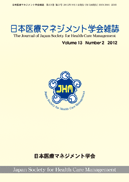Volume 20, Issue 2
Displaying 1-5 of 5 articles from this issue
- |<
- <
- 1
- >
- >|
Case Reports
-
Article type: Case Reports
2019Volume 20Issue 2 Pages 66-70
Published: September 01, 2019
Released on J-STAGE: June 14, 2024
Download PDF (1176K) -
Article type: Case Reports
2019Volume 20Issue 2 Pages 71-77
Published: September 01, 2019
Released on J-STAGE: June 14, 2024
Download PDF (801K) -
Article type: Case Reports
2019Volume 20Issue 2 Pages 78-83
Published: September 01, 2019
Released on J-STAGE: June 14, 2024
Download PDF (991K) -
Article type: Case Reports
2019Volume 20Issue 2 Pages 84-87
Published: September 01, 2019
Released on J-STAGE: June 14, 2024
Download PDF (463K) -
Article type: Case Reports
2019Volume 20Issue 2 Pages 88-91
Published: September 01, 2019
Released on J-STAGE: June 14, 2024
Download PDF (891K)
- |<
- <
- 1
- >
- >|
